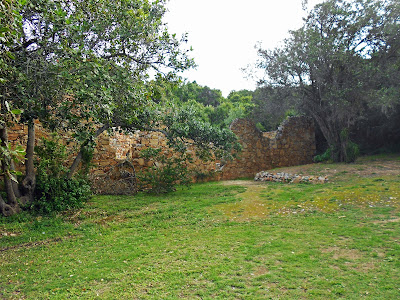Plettenberg Bay: Old Timber Shed

The Plettenberg Bay area was rich in natural forests. Baron Joachim van Plettenberg was worried about these forests and suggested that a control post must be erected to prevent the over-use of the timber. The Dutch East India Company started a woodcutter’s post in 1778. JF Meeding was appointed the first overseer of this post. In 1786 the Dutch East India Company contracted Johann Jacob Jerling to build a Timber Shed for storage of the timber. Today the remains of the Old Timber Shed can be found in Meeding Street. The remains have been partially restored twice. It is the oldest building in Plettenberg Bay and was declared a National Monument in 1936.





